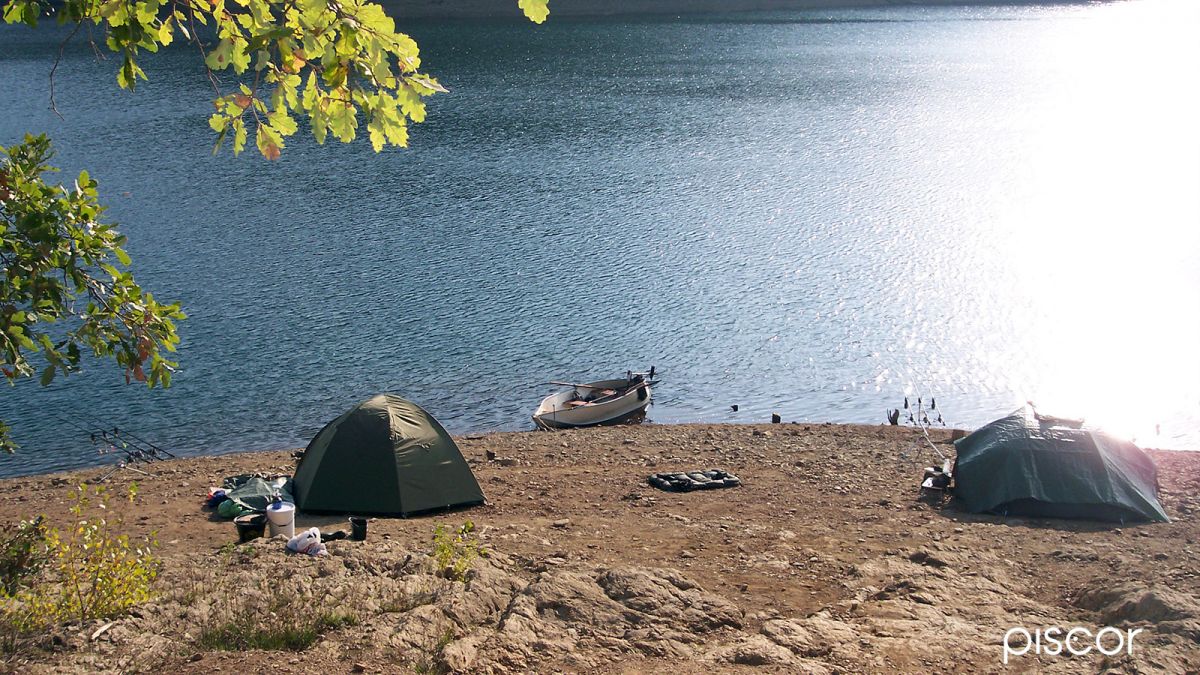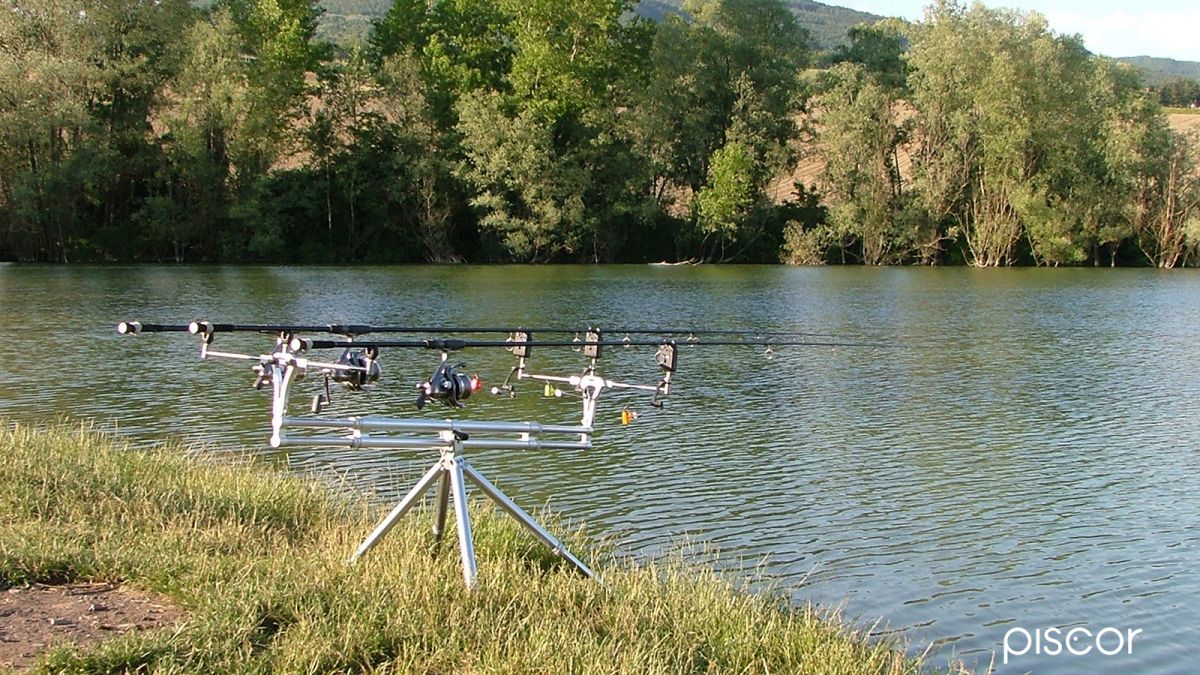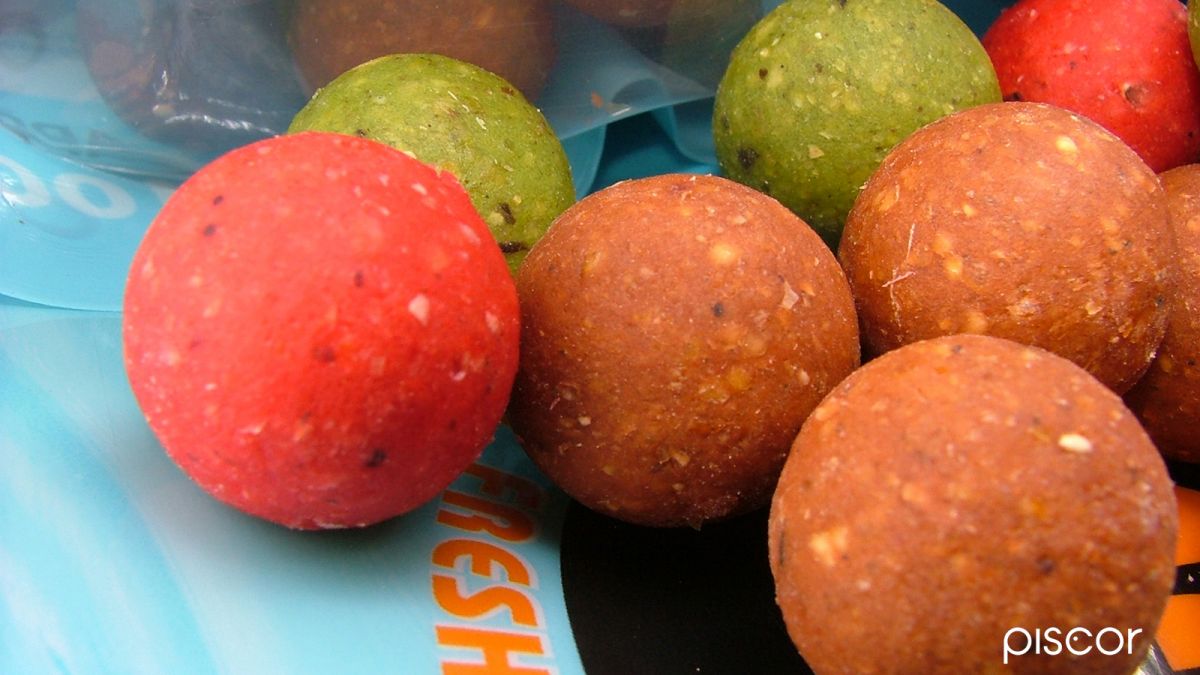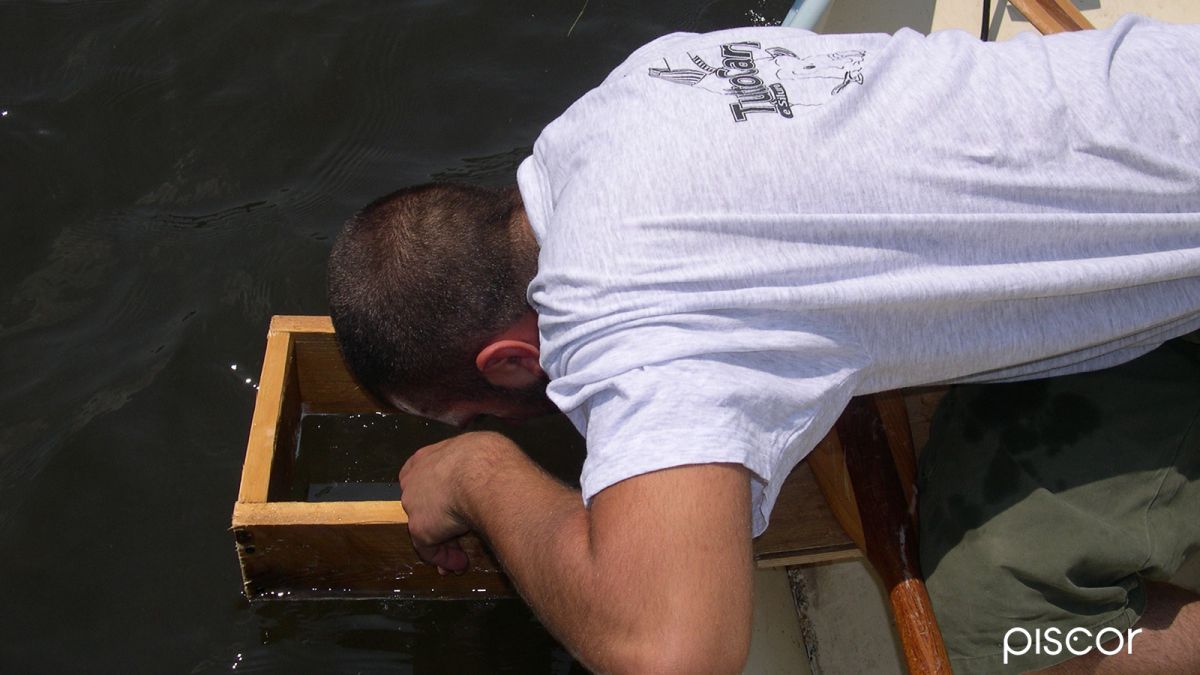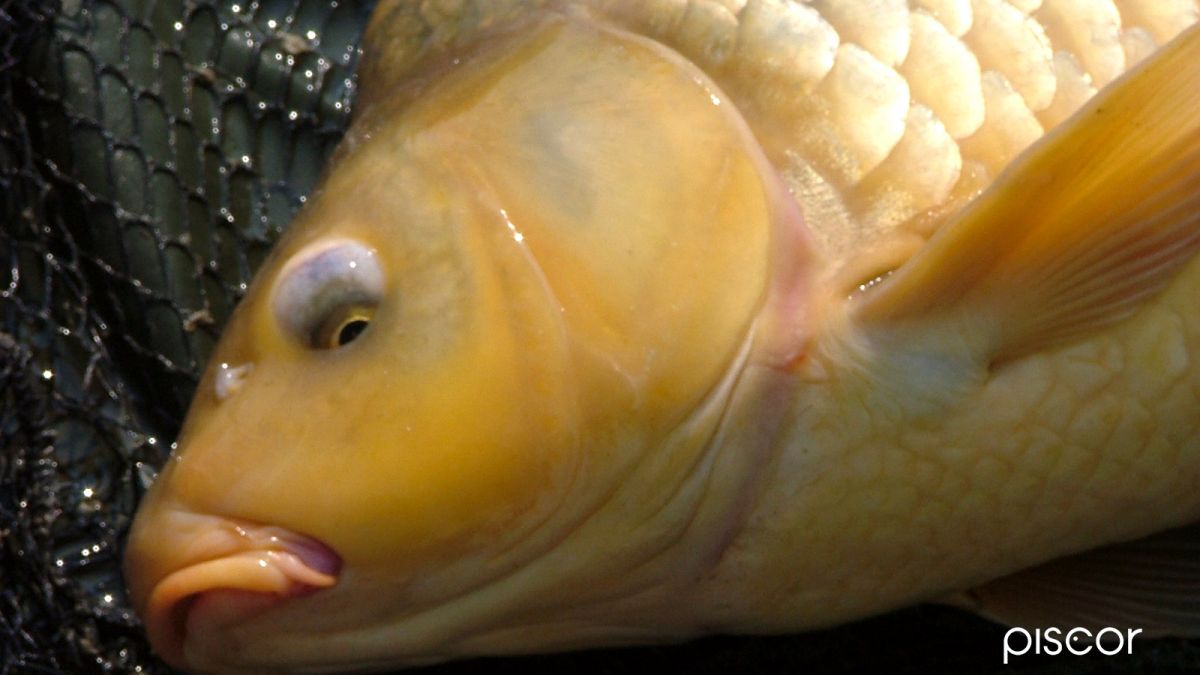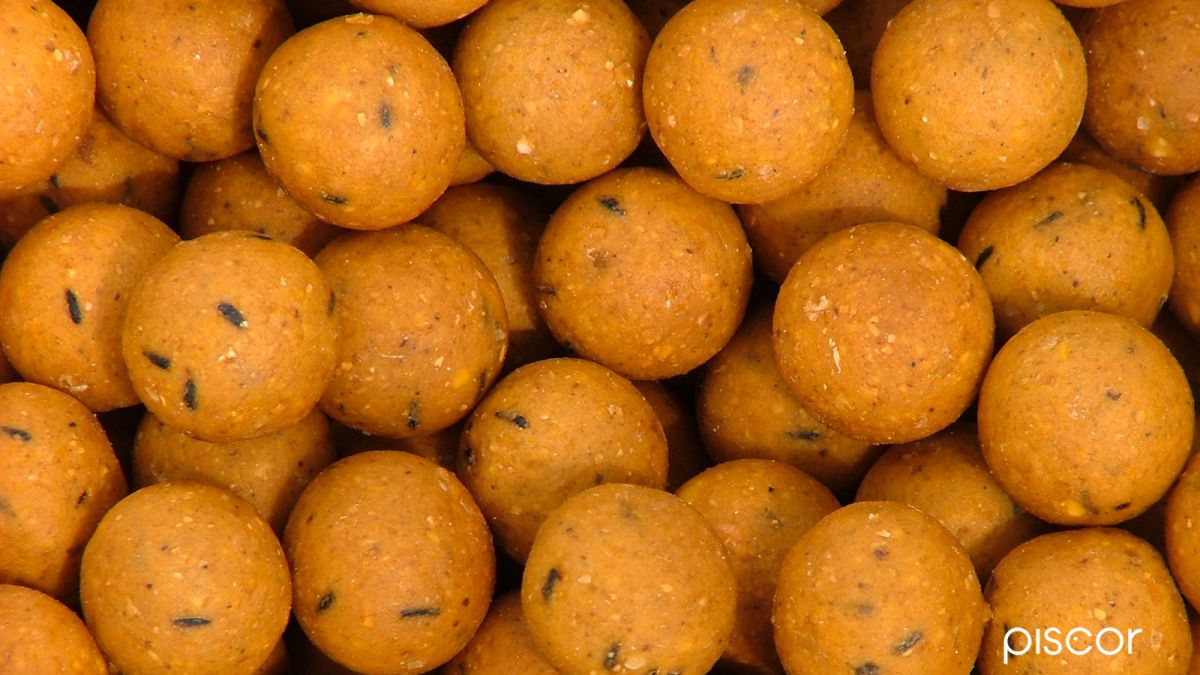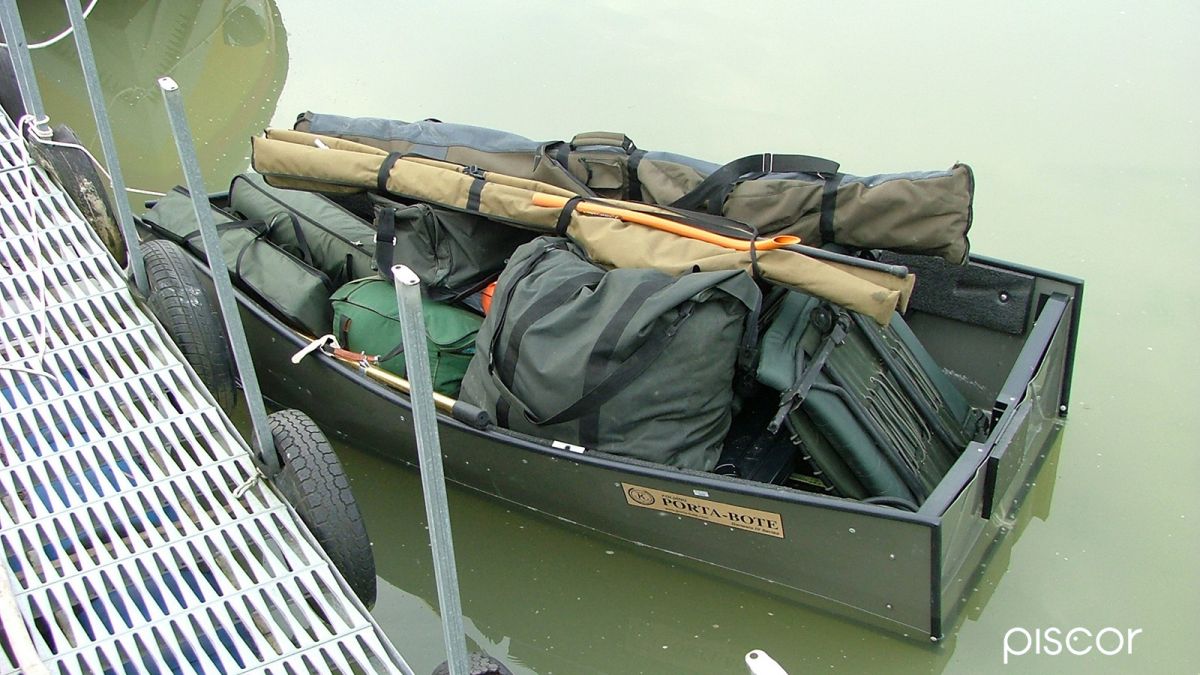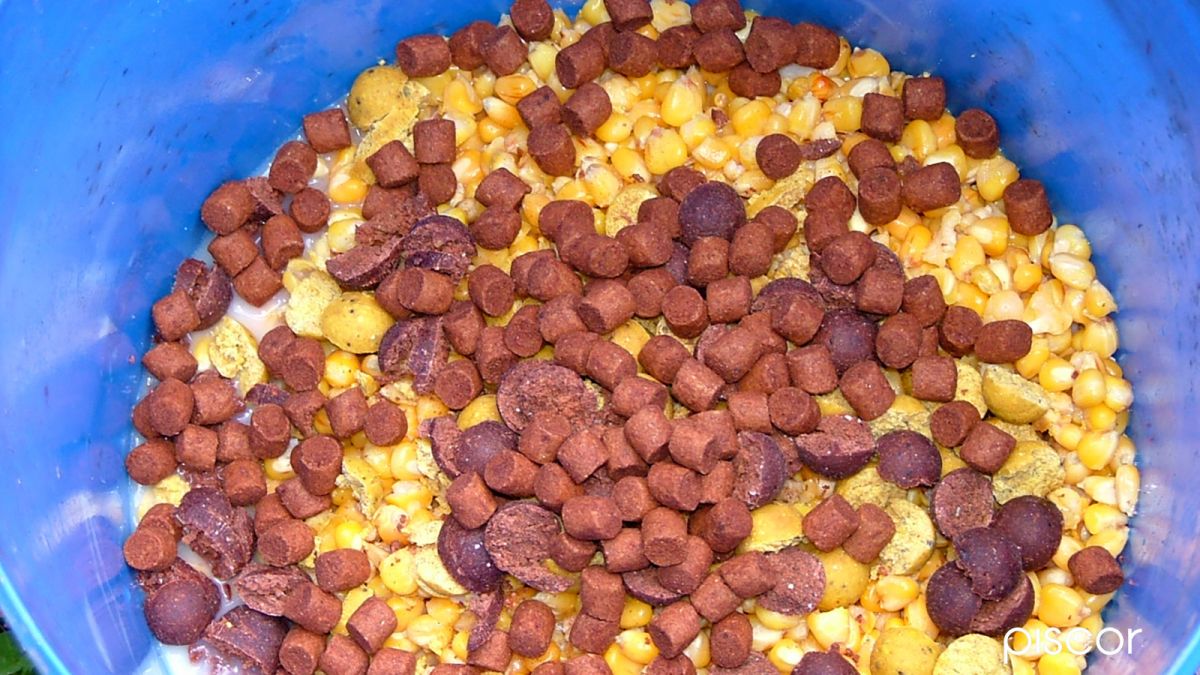When Carpfishing in lake, the typical signals emitted by fishes, evidence of the presence of a school of fish, are usually hard to hear and see because anglers are often distracted by a series of factors such as the surface of the water rippled by the wind or the great distance from the bank to the place where the fishes are.
What really could help the angler is to find a higher vantage point above the lake and start exploring the surface and the bank through a binoculars. The elements which can give the anglers an idea of what is the best spot for the carp fishing are: color of the water, swell, vegetation and bank slope.
The most important rule about carp fishing in a large lake or an hydroelectric reservoir is that is the angler who has to find the carps and not vice-versa. Early in the morning the swell is usually mitigated and the surface of the lake is flat so as to facilitate this precious scouting action.
Important details
The carps, even the big ones, usually follow the swell, because it is rich in nourishment. The erosive action of the wave is directly proportional to the dimension of the lake and this is very important in large lakes, where there are often strong winds.
Once the angler’s chosen the bank, he needs to walk around and look at the surface to understand where are fishes, plants, obstacles and objects that can give him a clear idea of what is the spot like and easily find the “hot spots”.
Once that the angler detects the presence of carps near vegetation or in some specific places, he will have to find the perfect area where to place his equipment and then start plumbing the depths.
It is very important to know how to “read” the water and understand at a glance which are the best areas of a lake. With wide spaces comes great difficulty, especially because the angler will often have to reconsider some consolidated beliefs due to his previous experiences.
When fishing in big lakes, the angler has to deal with long distances and with all the resulting technical difficulties. It is the power of his fishing equipment what makes the difference ( fishing rods, rod holders, boat reliability, safety equipment).
Another decisive element is represented by the quantity, the preparation and the way to make ground bait.
Reservoirs and Crater Lakes
The main purpose of their creation was to preserve and collect water for agriculture and production of electric energy, or, sometimes to control the flow of rivers. In the narrow gorges or where dams are, water is usually very deep, while, on the other side, at the entrance of the rivers, the areas are flat and large with a soft bottom due of the debris carried and deposited by the river.
In Italy the tectonic origins lakes are the largest ones (Garda, Lugano, Iseo). Those lakes have been created by the crustal displacements and their consequent depressions.
Over the centuries watercourses flowed into those lakes from the mountains. The Trasimeno lake is the only rainwater collection lake. Crater lakes are typical of central Italy and Lazio region.
They are very interesting because their bottom is usually regular from the bank for hundreds of meters and then it sinks in the middle.
Tools and methods of Control of the Bottom
The best and most accurate methods to examine the bottom of large lakes are the traditional Carp Fishing ones: fish finder, plumbing, and diving cameras.
In large lakes fishing is performed over great distances and using a boat. The fish finder is the most reliable, fast and accurate tool the modern angler can use to check the bottom.
Obviously when fishing in large lakes, in spots where there are seaweed and other obstacles, it is important to verify some specific elements such as the growth level of sea weed.
The best seasons
Spring and Summer are the best seasons for the Carp Fishing in lake. Spring is also the most unpredictable season. At the beginning of this season it is better to follow the same rules of the Winter fishing. But since May anglers have to choose lower waters, rich in natural nourishment but also ideal for the fish reproduction.
In lakes with regular banks, fishes prefer to spend a few days before the reproduction period at great distances. The ideal summer placement has to provide shadow and privacy.
Fishing during the summer in large lakes is hard because of tourists, boats and hot temperatures. In opposition, thanks to a constant swell, the large lakes have less atrophy problems and consequently less fish apathy.
Baits
When it comes to carp baits, you need to understand how much fishes like and recognize them as a food.
That’s the famous fast bait, that allows the anglers to attract fishes without any ground bait . A yellow boilie is perfect if used on a corn carpet, because when fishes enter into a feeding frenzy they won’t distinguish it. In order to get the fishes confused, the angler could even flavor the corn grains with the same flavor of his boilies, or also use a smaller boilie.
In large lakes it is not always easy to fish using boilies because it is hard to previously prepare the place with a sufficiently ground bait. That’s why it is better to use a 50% of particles baits in the ground bait, paying attention to swap them with boilies when you need to select bigger fishes.
Hookable boilies are very water resistant and durable. In order to get that, the angler needs to add some binder substances to the mix for the hookable boilies, such as albumin or cornstarch, natural products that don’t scare fishes. It is also possible to use a mix with neutral commercial boilies that become similar to ground bait, once dived.
The king of Particles, the Corn
Corn is the most representative particles and one of the best Carp fishing Baits, in any water.
Corn is reliable, with or without preventing ground baiting. It is attractive, sweet, visible, flavoring and coloring. It can be used in both diving and floating rig. If using corn in large lakes please follow the same directions given about boilies.

